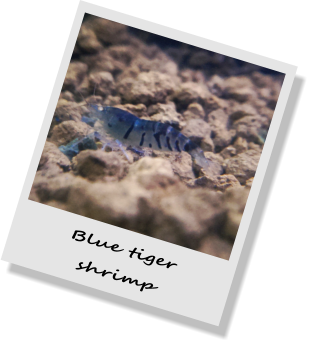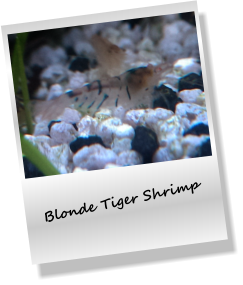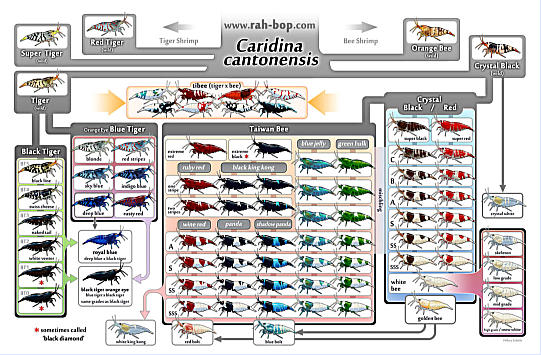
Orange eyed Tiger Shrimp
Caring & Breeding Orange eyed Tiger Shrimp
The Tiger Shrimp is a wonderful species to have in your shrimp collection. Its yellow head and yellow tail really offset the black stripes along the body. The Tiger Shrimp is in fact a species from the wild that is able to be bred in freshwater. As the Tiger Shrimp becomes more widespread throughout the hobby it has become a popular species for the "novice" shrimp hobbyist. The Tiger Shrimp is a great "second step" due to the fact that it is slightly more difficult to breed than the Red Cherry Shrimp, can be housed with the Red Cherry Shrimp and is cheaper than most other shrimp in the hobby. The Tiger Shrimp is a wild species located in China and possibly other Asian countries. The Tiger Shrimp comes in many different wild colorations such as the Red Tiger Shrimp and more are also being discovered. Temperature 76-78F (24-25°C) The optimum aquarium temperature for Tiger Shrimp is around 70-78°F (22-25°C). Other species might have slightly different temperature / enviroment so it is best to avoid adding others . pH ~6.5 - 7.5 The water parameters for the Tiger Shrimp are typically the same as other Tiger Shrimp species. A pH around 6.5.7.5 is suitable and this species also prefers softwater. Clean water is also a must as with all other shrimp and a temperature around 76- 78F seems to suit the Tiger Shrimp best from my experience. This species will breed very well as long as its water parameters are proper and the water is clean. Breeding Tiger Shrimp Like all other species, the Tiger Shrimp will breed extremely well and reproduce around the clock as long as it is healthy and happy. The tank water must be very clean and free of contaminants to make sure that the Tiger Shrimp is indeed happy. Each female Tiger Shrimp produces roughly 20-25 hatchlings and will do so constantly if the shrimp is healthy. Once hatching a batch of eggs it should take no more than a week for the same female Tiger Shrimp to once again possess eggs. Breeding the this species is not difficult whatsoever and I believe it is not more difficult than breeding Red Cherry Shrimp. The photo below shows a close up of a female Tiger Shrimps' eggs. Feeding the Tiger Shrimp is easy. They eat anything from blanched spinach, zucchini, algae wafers, shrimp Feeding is best done once a day. Only feed an amount of food that the shrimp can finish within 2-3 hours maximum. It is not good to feed in excess and have food sitting for too long. Overfeeding is a known cause of death and can also cause water quality issues. Remember that shrimp are scavengers in the wild. They will eat whatever they find and are not used to a constant food source 24/7. Not feeding for one or two days is fine and will not harm this species at all. Sometimes I will not feed for a couple of days in order to let the shrimp cleanse their systems and keep the water clean at the same time. Note: Some species of shrimp are know to be able to handle water changes and/or PH swings.But even in these cases the survival rate will be much higher (especially for the shrimp fry) if are able to keep these level as steady as possible. In case of adding “new/fresh” water try adding it very slow or even dripping it into your tank.In case of Co2 do it EXTRA slow and dont forget to TURN IT OFF AT NIGHT!! You will notice an “explosion” in population and thus more to enjoy!!




















































